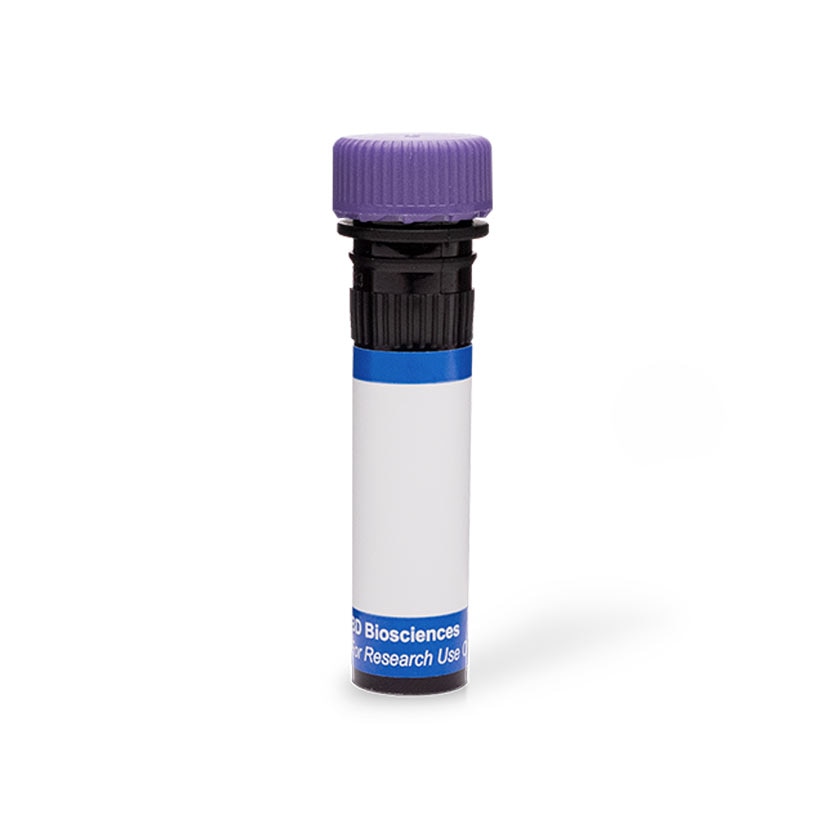Old Browser
This page has been recently translated and is available in French now.
Looks like you're visiting us from {countryName}.
Would you like to stay on the current country site or be switched to your country?


Regulatory Status Legend
Any use of products other than the permitted use without the express written authorization of Becton, Dickinson and Company is strictly prohibited.
Preparation And Storage
Recommended Assay Procedures
BD® CompBeads can be used as surrogates to assess fluorescence spillover (compensation). When fluorochrome conjugated antibodies are bound to BD® CompBeads, they have spectral properties very similar to cells. However, for some fluorochromes there can be small differences in spectral emissions compared to cells, resulting in spillover values that differ when compared to biological controls. It is strongly recommended that when using a reagent for the first time, users compare the spillover on cells and BD® CompBeads to ensure that BD® CompBeads are appropriate for your specific cellular application.
Product Notices
- Please refer to www.bdbiosciences.com/us/s/resources for technical protocols.
- Please refer to http://regdocs.bd.com to access safety data sheets (SDS).
- For U.S. patents that may apply, see bd.com/patents.
- Caution: Sodium azide yields highly toxic hydrazoic acid under acidic conditions. Dilute azide compounds in running water before discarding to avoid accumulation of potentially explosive deposits in plumbing.
- Since applications vary, each investigator should titrate the reagent to obtain optimal results.
- The production process underwent stringent testing and validation to assure that it generates a high-quality conjugate with consistent performance and specific binding activity. However, verification testing has not been performed on all conjugate lots.
- Human donor specific background has been observed in relation to the presence of anti-polyethylene glycol (PEG) antibodies, developed as a result of certain vaccines containing PEG, including some COVID-19 vaccines. We recommend use of BD Horizon Brilliant™ Stain Buffer in your experiments to help mitigate potential background. For more information visit https://www.bdbiosciences.com/en-us/support/product-notices.
- When using high concentrations of antibody, background binding of this dye to erythroid fragments produced by ammonium chloride-based lysis, such as with BD Pharm Lyse™ Lysing Buffer (Cat. No. 555899), has been observed when the antibody conjugate was present during the lysis procedure. This may cause nonspecific staining of target cells, such as leukocytes, which have bound the resulting erythroid fragments. This background can be mitigated by any of the following: titrating the antibody conjugate to a lower concentration, fixing samples with formaldehyde, or removing erythrocytes before staining (eg, gradient centrifugation or pre-lysis with wash). This background has not been observed when cells were lysed with BD FACS™ Lysing Solution (Cat. No. 349202) after staining.
- For fluorochrome spectra and suitable instrument settings, please refer to our Multicolor Flow Cytometry web page at www.bdbiosciences.com/colors.
- An isotype control should be used at the same concentration as the antibody of interest.
- Please observe the following precautions: We recommend that special precautions be taken (such as wrapping vials, tubes, or racks in aluminum foil) to protect exposure of conjugated reagents, including cells stained with those reagents, to any room illumination. Absorption of visible light can significantly affect the emission spectra and quantum yield of tandem fluorochrome conjugates.
Companion Products




The LpMab-23 monoclonal antibody specifically recognizes a cancer-specific form of human podoplanin. Podoplanin is a 38-44 kDa type I transmembrane glycoprotein that is encoded by PDPN. This heavily glycosylated mucin type protein is named for its expression on kidney glomerular epithelial cells known as podocytes. Although the podoplanin protein is expressed on a wide variety of cell types in normal tissues (including placenta, lung, skeletal muscle and brain), LpMab-23 recognizes an altered glycosylation pattern that occurs on oral cancer cells and it shows minimal reactivity with the surrounding non-cancerous tissue. In contrast, the LpMab-17 monoclonal antibody recognizes a non-glycosylated epitope of podoplanin on normal and cancer cells. Podoplanin induces platelet aggregation via its three platelet aggregation-stimulating (PLAG) domains; it binds C-type lectin domain family 1 member B (Clec1B, also known as CLEC2); and it is involved in actin cytoskeleton organization and in cellular adhesion and migration. It also plays roles in organogenesis, vascular development, inflammatory diseases, tumorigenesis, and cancer cell motility and metastasis.

Development References (8)
-
Astarita JL, Acton SE, Turley SJ. Podoplanin: emerging functions in development, the immune system, and cancer.. Front Immunol. 2012; 3:283. (Biology). View Reference
-
Chang JE, Turley SJ. Stromal infrastructure of the lymph node and coordination of immunity.. Trends Immunol. 2015; 36(1):30-9. (Biology). View Reference
-
Dang Q, Liu J, Li J, Sun Y. Podoplanin: a novel regulator of tumor invasion and metastasis.. Med Oncol. 2014; 31(9):24. (Biology). View Reference
-
Miyazaki A, Nakai H, Sonoda T, et al. LpMab-23-recognizing cancer-type podoplanin is a novel predictor for a poor prognosis of early stage tongue cancer.. Oncotarget. 2018; 9(30):21156-21165. (Clone-specific: Immunohistochemistry). View Reference
-
Pan Y, Xia L. Emerging roles of podoplanin in vascular development and homeostasis.. Front Med. 2015; 9(4):421-30. (Biology). View Reference
-
Retzbach EP, Sheehan SA, Nevel EM, et al. Podoplanin emerges as a functionally relevant oral cancer biomarker and therapeutic target.. Oral Oncol. 2018; 78:126-136. (Clone-specific: Immunohistochemistry). View Reference
-
Ugorski M, Dziegiel P, Suchanski J. Podoplanin - a small glycoprotein with many faces.. Am J Cancer Res. 2016; 6(2):370-86. (Biology). View Reference
-
Yamada S, Ogasawara S, Kaneko MK, Kato Y. LpMab-23: A Cancer-Specific Monoclonal Antibody Against Human Podoplanin.. Monoclon Antib Immunodiagn Immunother. 2017; 36(2):72-76. (Immunogen: Flow cytometry, Immunohistochemistry). View Reference
Please refer to Support Documents for Quality Certificates
Global - Refer to manufacturer's instructions for use and related User Manuals and Technical data sheets before using this products as described
Comparisons, where applicable, are made against older BD Technology, manual methods or are general performance claims. Comparisons are not made against non-BD technologies, unless otherwise noted.
For Research Use Only. Not for use in diagnostic or therapeutic procedures.